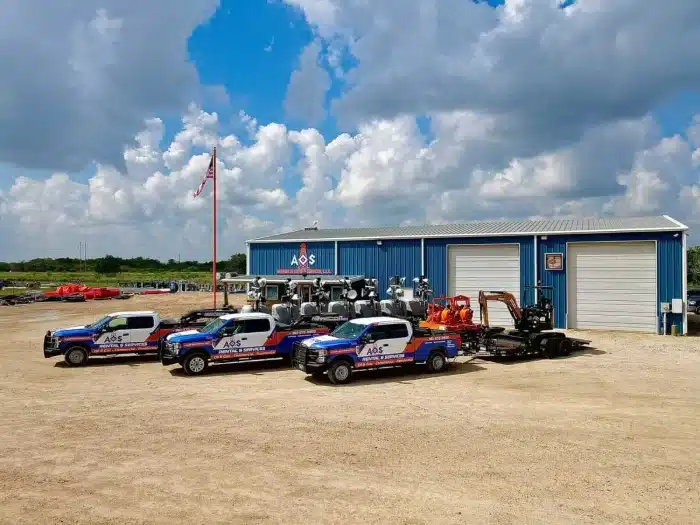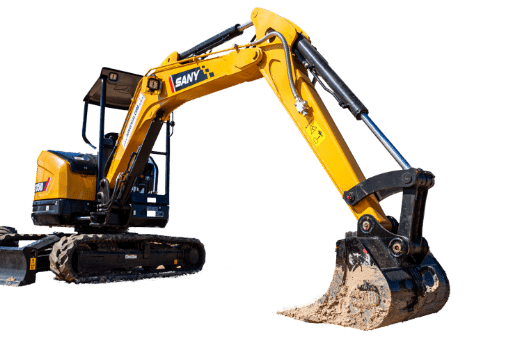In the bustling world of construction and agriculture, a multitude of machinery and equipment is deployed to make tasks easier and more efficient. Among them, one particular machine stands out for its versatility and multi-functional prowess – the telehandler. So, what is a telehandler? Let’s dive deep into the realm of this incredible machine.
What is a Telehandler?
A telehandler, also known as a telescopic handler, is a multi-purpose hydraulic machine engineered to lift and transport heavy materials. The term ‘telehandler’ stems from its unique feature – the telescopic boom, which can extend and retract, providing a remarkable range of motion that sets it apart from other loading machinery like forklifts or cranes.
The telehandler’s design enables it to handle an array of attachments like forks, buckets, or crane jibs, making it a champion of adaptability in diverse work environments. From construction sites to agricultural fields, it’s no wonder telehandlers are considered the Swiss Army knives of heavy machinery.
What Is A Telehandler Used For?
Telehandlers play a pivotal role in various industries due to their versatility and precise movement capabilities. The ability to switch between different attachments allows operators to haul a variety of materials across diverse workspaces. Here are a few common uses for telehandlers:
Construction
In construction sites, telehandlers can transport materials like pallets and raw materials across uneven terrain, making them a cost-effective tool for many projects. They can lift materials to higher floors and maneuver around obstacles with ease, thanks to their extendable booms.
Agriculture
In the agricultural sector, telehandlers are often used to move hay bales and other large loads. Buckets attached to telehandlers can reach into high-sided trailers or hoppers, making them a vital tool for many farming tasks.
Snow Removal
Thanks to their low ground clearance, telehandlers are also excellent for snow removal, particularly in parking structures where traditional plows or trucks might be too large.
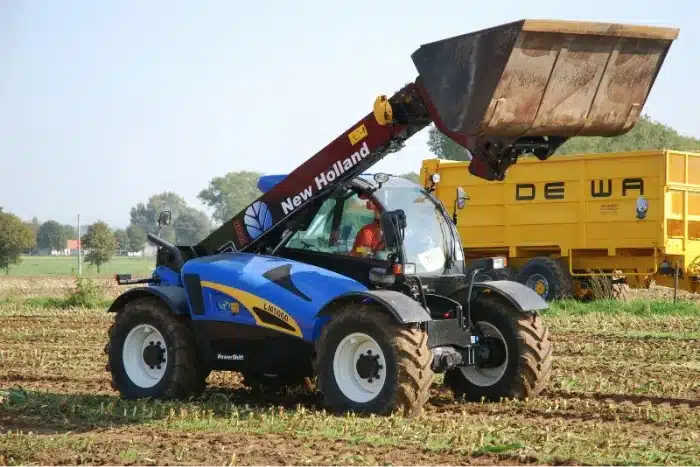
Telehandler vs. Forklift
While both forklifts and telehandlers serve similar purposes, they offer different levels of flexibility and range of motion. Forklifts can lift materials a few feet off the ground and transport them across a flat surface. However, their capabilities pale in comparison to telehandlers.
Telehandlers not only navigate rough terrain with ease, but they can also lift cargo without moving their base. Plus, they can move at diagonal angles, delivering loads at a higher elevation. This unparalleled maneuverability makes them a preferred choice in many industries.

The Perks Of A Telehandler
Telehandlers bring a host of benefits to the table, making them a valuable addition to any worksite.
Versatile Attachments
One of the key advantages of telehandlers lies in their ability to handle different attachments. Whether it’s pallets, soil, or personnel, one machine can do the work of several devices, thanks to its interchangeable attachments.
Exceptional Adaptability
Telehandlers can function effectively in any environment. Whether it’s the smooth, even terrain of an interior space, or the rough, uneven footing of an outdoor project, they can operate on any terrain without additional safety protocols.
Full Range of Motion
Unlike many lifting tools, telehandlers offer a full range of movement. Their booms enable them to transport materials at various elevations, allowing for movement in confined spaces and around obstacles.
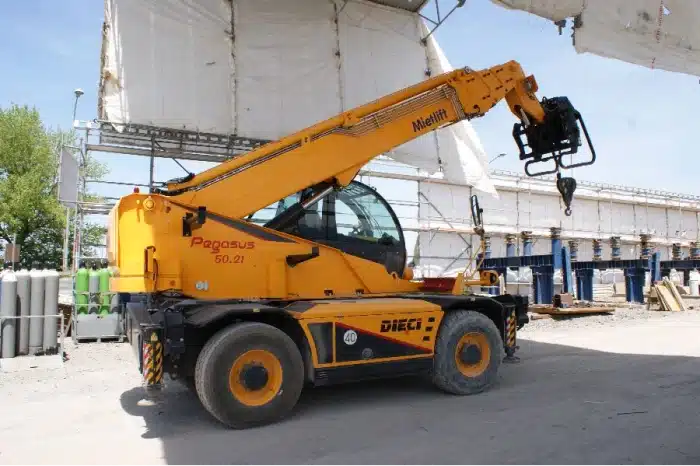
The Mechanics Of A Telehandler
The operation of a telehandler involves a seamless exchange of signals between an internal computer and weight sensors scattered throughout the device. This constant risk assessment lets the operator use features that safely transfer materials. Here’s a brief overview of how a telehandler works:
- Steering options: Telehandlers provide front-wheel steering, four-wheel steering, and crab steering options, which operators can choose based on the load they’re carrying.
- Boom flexibility: A telehandler’s boom offers the same level of versatility as a crane. It can extend and retract to navigate around obstacles.
- Adjustable forks: Just like a forklift, telehandlers lift materials directly off the ground. They can also tilt their cargo forward or backward for better balance.
- Load stabilizers: If a load seems too heavy for a telehandler, built-in stabilizers prevent wheel movement to increase maximum carrying capacity.
- Frame leveling: Telehandlers maintain even footing on unstable surfaces. Their axles keep the device level, even on the most uneven terrain.
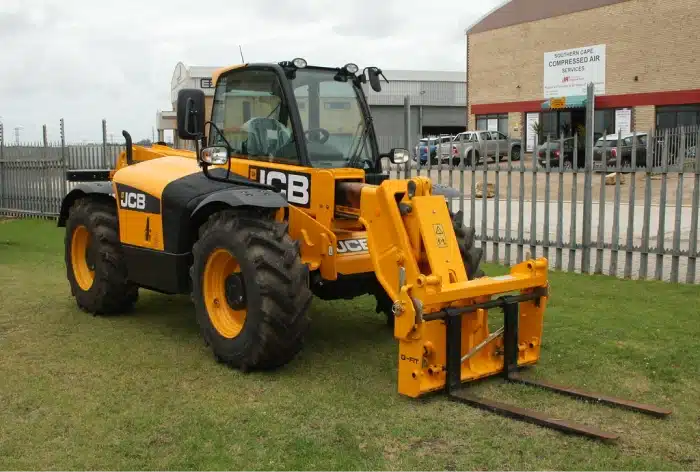
Key Components Of A Telehandler
Despite their size, telehandlers are compact and easy to transport. They owe their efficiency and safety to a few key components:
The Cab
The cab is where the operator sits and manages the machine. Depending on the model, larger tires may lift the cab to provide the operator with a wider view.
Extendable Boom
The extendable boom is the telehandler’s most distinguishing feature. Also known as a telescopic cylinder, the boom allows the operator to maneuver around obstacles and lift materials to higher elevations.
Attachments
Various attachments can be affixed at the end of the telehandler’s extendable boom. From forks to buckets, the assortment of attachments adds to the machine’s versatility.

Picking The Right Attachment
Choosing the right attachment for your telehandler can significantly enhance its efficiency and effectiveness. Here are a few examples of commonly used attachments:
- Pallet forks: These are used to carry loads such as pallets, raw materials, or piping.
- Crane jibs: These hooks allow telehandlers to function like a crane, aiding in carrying materials over and around obstacles.
- Buckets: These scoop up loose materials like soil or sand, making them a favorite in the agriculture sector.
- Work cages: These platforms allow telehandlers to lift workers to higher elevations.
Renting vs. Buying
Whether to rent or buy a telehandler depends largely on your industry and budget. Here are some points to consider:
Buying a Telehandler
If telehandlers form a crucial part of your daily operations and you can afford their upkeep, buying could be the right choice. However, keep in mind that attachments and maintenance materials may need to be purchased separately.
Renting a Telehandler
In all other cases, renting could be a more cost-efficient option. Renting allows you to select a model that matches the needs of each project. If a telehandler malfunctions on the job, you can get assistance from your lender.

The Future of Telehandlers
The future of telehandlers is bright, thanks to their versatility and efficiency. With advancements in technology, telehandlers are likely to become even more adaptable and user-friendly, making them an essential tool in any heavy machinery arsenal.
So, whether you’re a seasoned construction veteran or a curious onlooker, understanding the ins and outs of a telehandler can help you appreciate the marvels of modern machinery. Remember, when it comes to dealing with heavy loads, few machines can match the versatility and precision of a telehandler. It’s no wonder they’ve become a staple in industries across the globe!
If you’re considering renting a telehandler for your next project, the team of experts at AOS Rental is ready to assist you. Explore their range of reach forklifts and telehandlers today!
